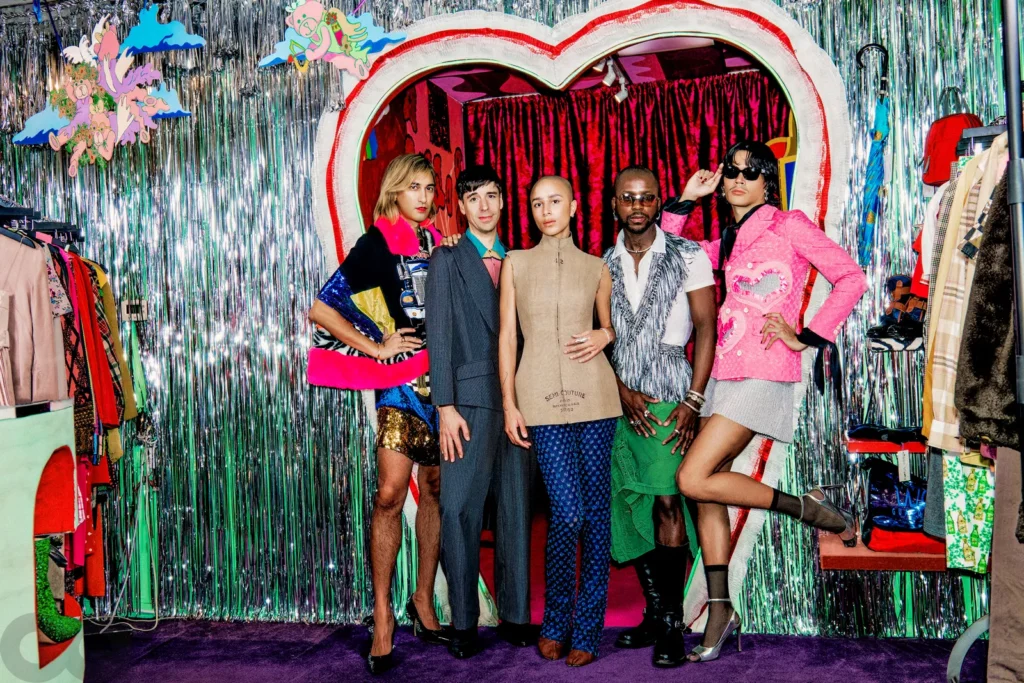Fashion is an industry where trends often come full circle, bringing the past back into the spotlight. In recent years, vintage clothing has greatly grown, especially with younger generations. From 80s-inspired bomber jackets to 90s grunge looks, fashion-forward consumers are turning to styles of yesteryear to make bold statements today. But why is vintage fashion being loved again, and how does the marketing for this segment of the industry contribute to its growing popularity? Let’s delve into the reasons behind this phenomenon and explore how fashion marketers are successfully riding this wave.
The Appeal of Vintage Fashion
1. Nostalgia and Individuality
One of the strongest driving forces behind the resurgence of vintage fashion is nostalgia. People have an innate desire to connect with the past, and wearing vintage clothing allows them to do just that. Vintage pieces tell a story, and for many, that connection to a bygone era evokes a sense of charm and authenticity that modern fast fashion lacks.
Another key appeal is the quest for individuality. In a world dominated by mass production and look-alike trends, vintage clothing offers a way to stand out. Each piece is unique, and the limited availability of certain styles and sizes ensures that those who wear vintage can craft a one-of-a-kind look. Fashion enthusiasts are now more inclined to mix old and new styles, creating hybrid outfits that reflect personal expression.
2. Sustainability and Ethical Consumption
In addition to the aesthetic appeal, vintage fashion is often associated with sustainability. With the rise of environmental awareness, many consumers are becoming more conscious of the impact their fashion choices have on the planet. Vintage clothing aligns with the principles of ethical consumption as it promotes recycling and reduces waste. Instead of buying new clothes from fast-fashion retailers, customers are opting for pre-loved garments that contribute to a circular economy.
As Gen Z and millennials prioritize eco-friendly lifestyles, their love for vintage fashion has grown. This demographic, in particular, is rejecting fast fashion’s throwaway culture in favor of slow, sustainable alternatives. By embracing secondhand clothing, they are supporting fashion practices that are less harmful to the environment, helping to preserve resources and reduce carbon footprints.
Marketing Vintage Fashion: Strategies That Resonate
1. Leveraging Social Media and Influencers
Social media has played a pivotal role in reviving interest in vintage clothing. Platforms like Instagram, TikTok, and Pinterest allow fashion lovers to showcase their unique style, inspire others, and discover trends in real time. Influencers and fashion bloggers are especially important in this space. Many influencers focus on thrift hauls, vintage finds, and retro fashion inspiration, helping to popularize vintage looks with their followers.
Marketers have embraced the influencer economy, collaborating with digital creators who specialize in vintage and thrifted styles. Through these partnerships, brands reach niche audiences who are passionate about sustainable fashion. Instagram, in particular, has become a thriving marketplace for vintage fashion, where independent sellers and curated boutiques attract customers by sharing visually appealing, well-curated content.
2. Curating a Story Behind Every Piece
Vintage clothing inherently comes with a history, which makes storytelling a central part of the marketing process. Brands can leverage this by curating the backstory of their pieces, appealing to customers who want to own garments that are more than just fabric. By highlighting the origins, era, and even the previous owner, marketers add layers of value that modern clothing often lacks.
For example, luxury vintage retailers such as The Real Real and Vestiaire Collective focus on authentication and provenance, allowing buyers to feel confident they are purchasing rare, authentic pieces. Brands tell stories about the fashion houses that made these garments, the cultural movements they were part of, and the trends that defined those eras. This attention to storytelling helps foster a deeper emotional connection between the product and the consumer.

3. Pop-Up Shops and Vintage Markets
Brick-and-mortar shopping may have seen a decline in recent years, but pop-up shops and vintage markets are thriving. These temporary retail experiences cater to a generation that values not just products but experiences. Vintage pop-up shops allow fashion enthusiasts to browse unique collections in curated spaces that evoke nostalgia and creativity.
For fashion marketers, organizing or sponsoring vintage pop-up events can be a highly effective strategy. These markets create a sense of community, bringing together like-minded individuals who share a passion for sustainable, one-of-a-kind clothing. By offering limited-time events, brands capitalize on the fear of missing out (FOMO), driving urgency and foot traffic.
4. Customizing Online Shopping Experiences
E-commerce platforms have played a significant role in democratizing access to vintage clothing. Whether through independent sellers on platforms like Etsy or specialized vintage retailers like ThredUp, consumers can now shop vintage from the comfort of their homes.
Fashion marketers are enhancing the online shopping experience by using personalized recommendations, AI-driven curation, and detailed product descriptions to recreate the treasure-hunting aspect of vintage shopping. Offering virtual try-ons and augmented reality features further enriches the customer experience, making vintage shopping feel modern while retaining its retro charm.
Why Vintage Clothes Are Loved Again: A Summary
At its core, the resurgence of vintage clothing reflects a desire for more than just fashion—it’s a movement that embraces sustainability, individuality, and nostalgia. Consumers are increasingly rejecting fast fashion and mass-produced trends, instead opting for timeless pieces that tell a story. This shift in consumer behavior is a response to global environmental challenges, but also a search for meaning and authenticity in what they wear.
Fashion marketers have skillfully tapped into these sentiments, using strategies that blend digital engagement, influencer collaborations, and storytelling. Creating immersive shopping experiences and curating the history behind each piece adds emotional value that resonates with modern buyers. Whether through pop-up shops or engaging social media content, the marketing of vintage clothing has transformed how people think about their wardrobes, allowing them to wear the past while looking toward the future.

